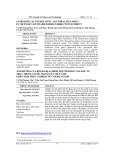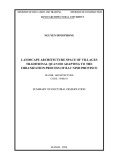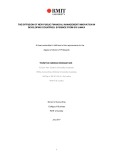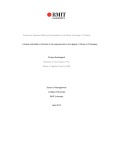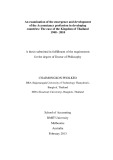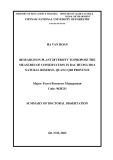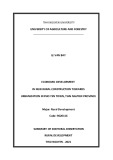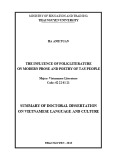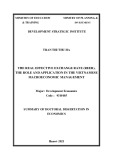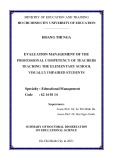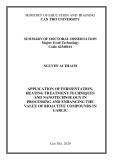
reflecting the relationship between firm’s profit and main inputs
such as capital/technology (K) and labor (L), and other costs,
including carbon taxation costs. Theoretical model was developed
using optimization algorithms and simulations using hypothetical
approximate data.
The thesis provides theoretical findings that the application of
carbon taxation has the negative effect that lowering the
investment level of the firm, however, at the same time, it also has
the positive effect of restricting investors with low technology
level and encouraging investors with higher technology level at
the same carbon tax rate. Thus, if the carbon tax is used as a
regulatory tool, the government may develop policies that will
encourage high-tech investors leading to the higher quality of
foreign investment in Vietnam.
CHAPTER 1: OVERVIEW OF RESEARCH
1.1. Research setting and motivations
Since the issuance of United Nations’ Climate Change
Declaration in 1992 and after that there were many countries
entering the Kyoto Convention 1997, to commit cutting
greenhouse gas emissions by several measures in which carbon
taxation is a prime example. Some developing countries like
Vietnam are not yet committed to the immediate adoption of
compulsory carbon emission reductions such as carbon taxes, but
it could be possible in the near future. Therefore, it can be
reasonably said that the future investment environment in Vietnam
is likely to be characterized by uncertainties related to carbon
taxation that could be imposed on carbon emissions-generating
projects and fossil energy extensive projects (energy based on
coal, oil and natural gas). This raises the question that what
behavioral reaction of investors to carbon tax uncertainties when
they are planning to invest in non-carbon taxed countries as
Vietnam?
1.2. Research targets and research questions.






